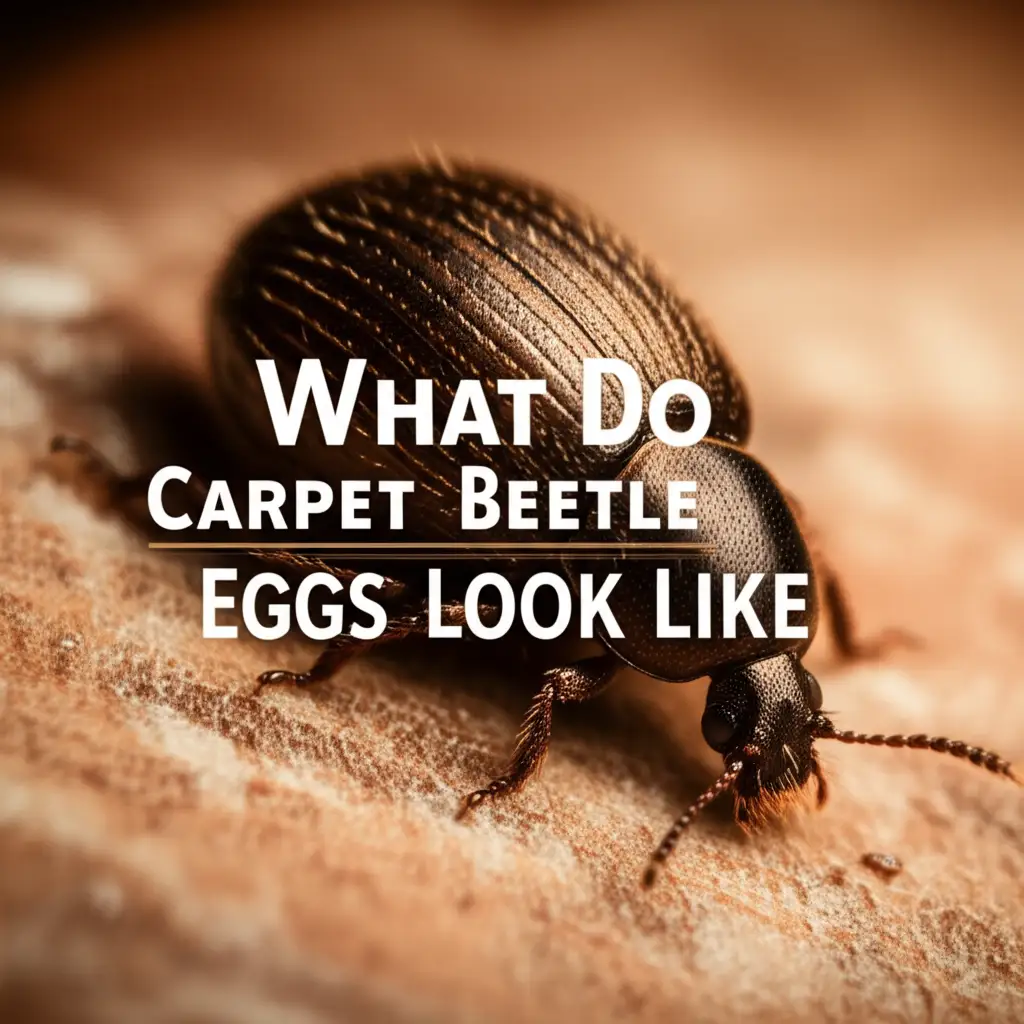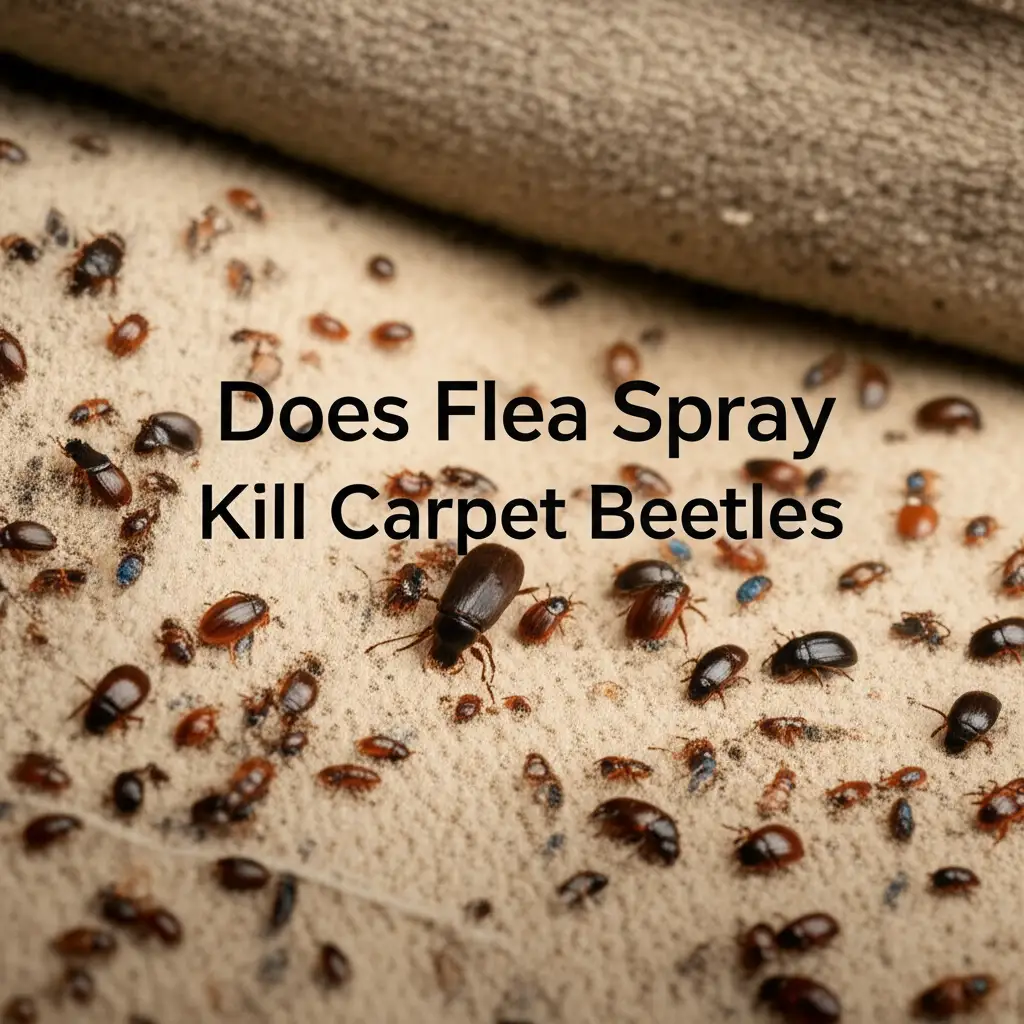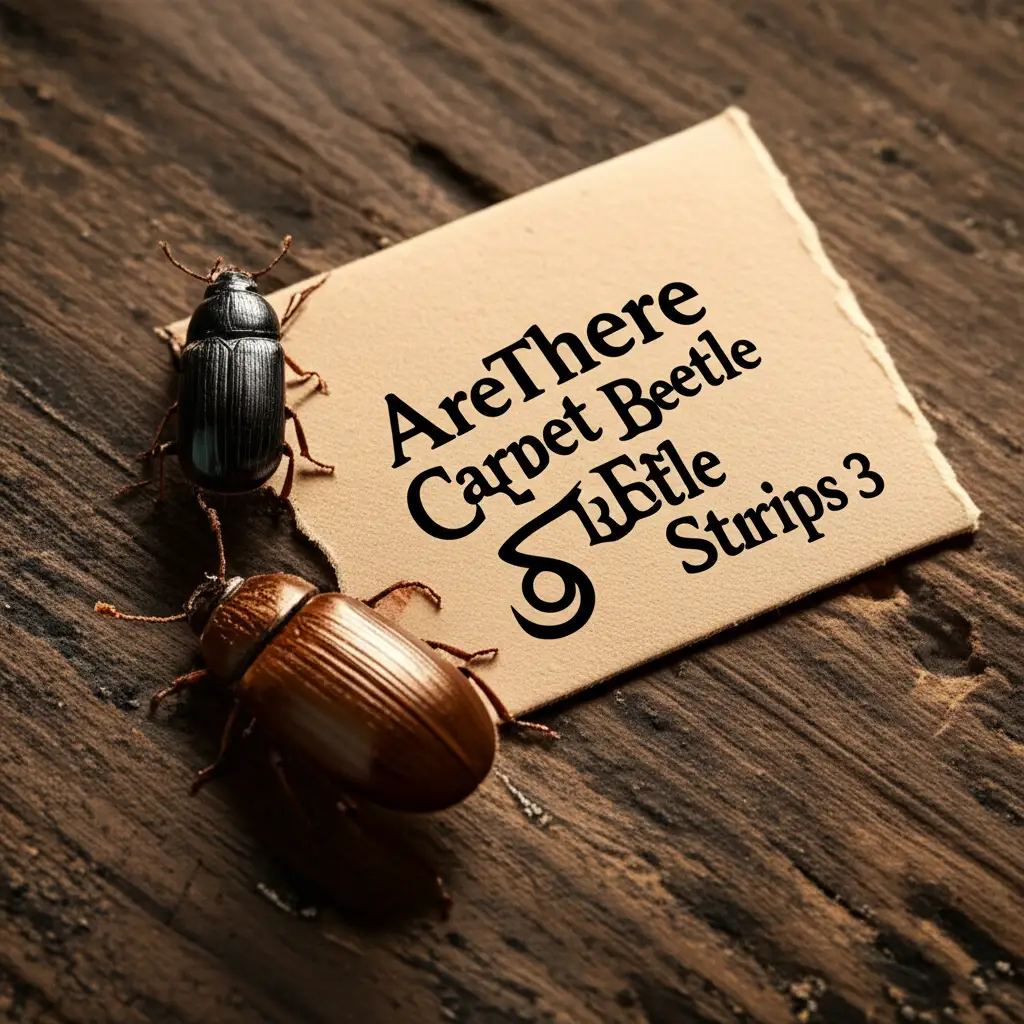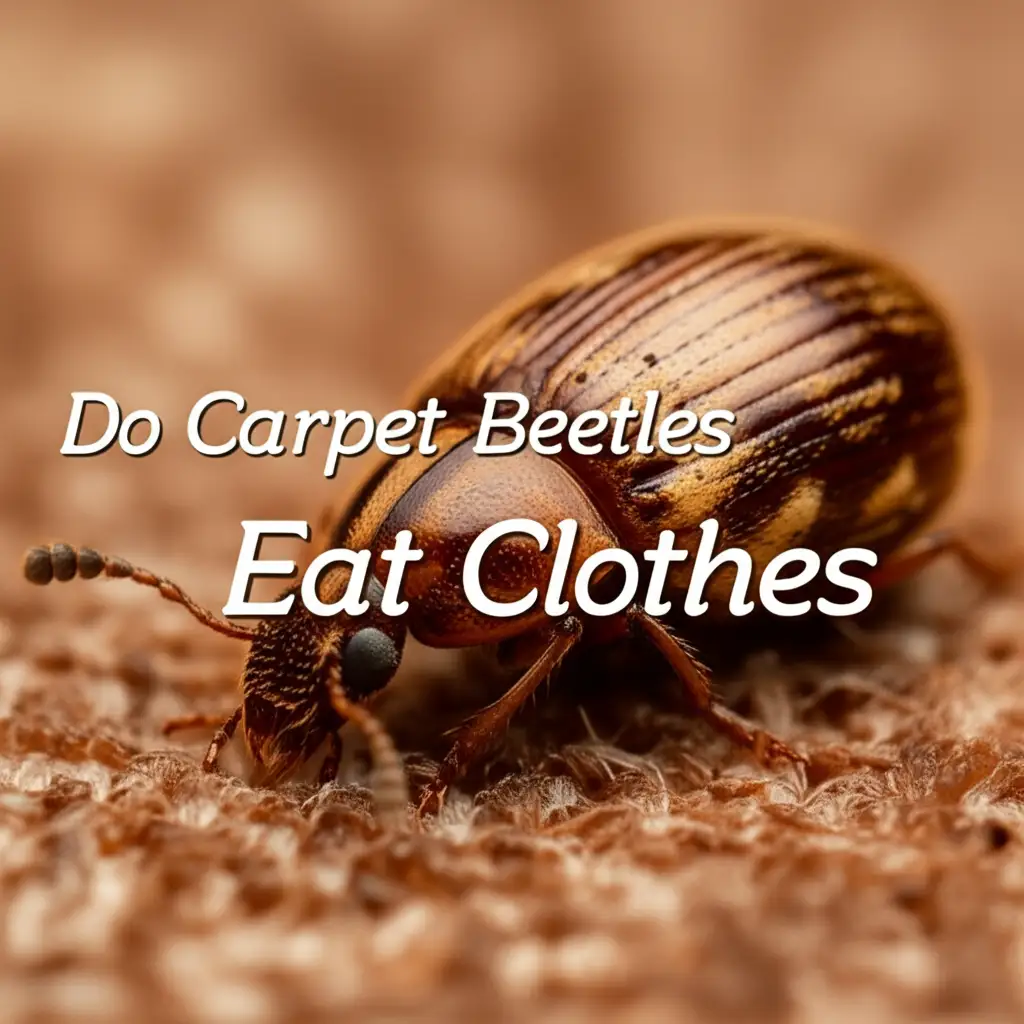· Elira Thomsen · Pest Control · 17 min read
How Long Is The Life Cycle Of Carpet Beetles
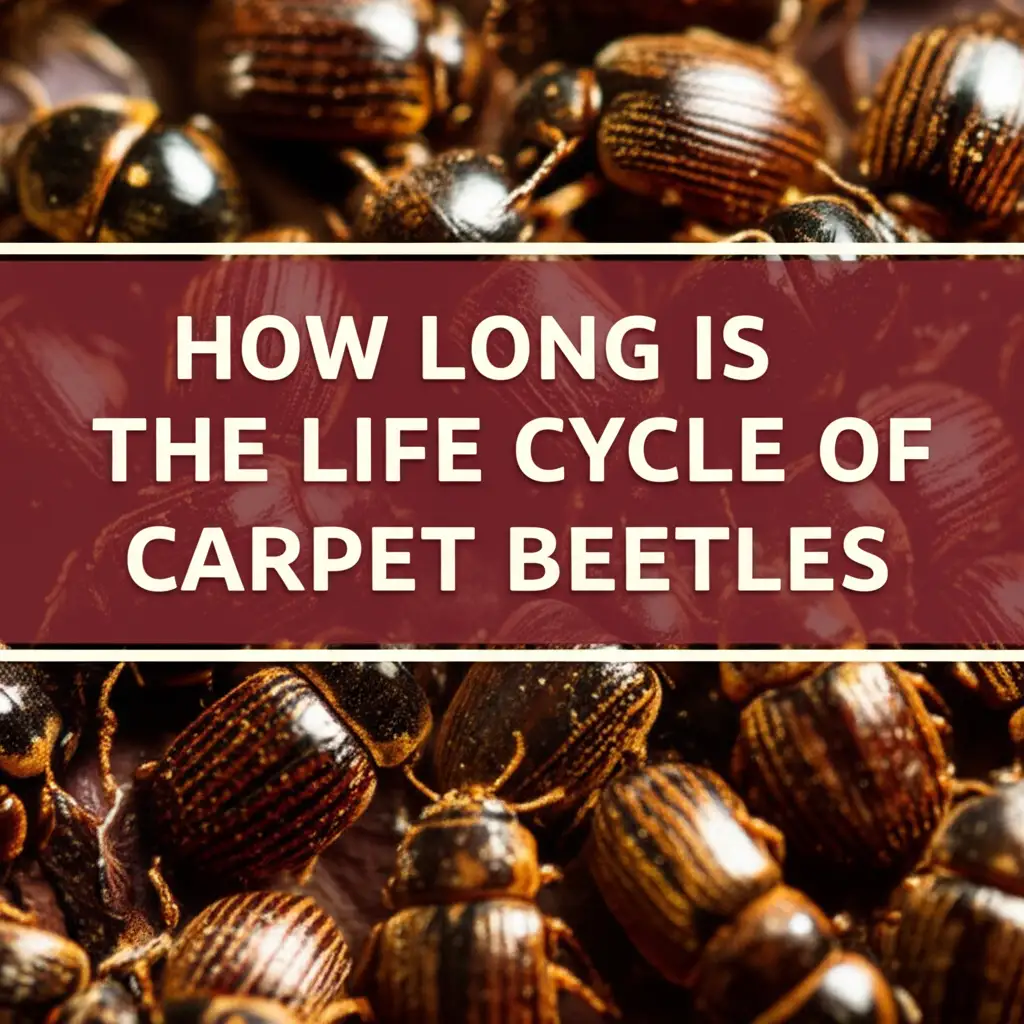
Understanding the Carpet Beetle Life Cycle: How Long Do They Live?
Have you ever wondered about those tiny, fuzzy pests munching on your favorite wool sweater or carpet? You might be dealing with carpet beetles. Understanding how long is the life cycle of carpet beetles is key to effective pest control. These small insects can cause significant damage in your home if left unchecked. They are common household pests that feed on natural fibers.
This article will break down each stage of the carpet beetle’s life, from egg to adult. We will also cover different carpet beetle species, how they develop, and what you can do to prevent infestations. Knowing their life cycle helps you stop them for good. I will share important facts to help you protect your home. This information will empower you to manage these pests.
Takeaway
- Carpet beetles undergo complete metamorphosis, meaning they pass through four distinct stages: egg, larva, pupa, and adult.
- The entire carpet beetle life cycle can range significantly, typically from three months to over a year.
- The duration of the life cycle depends on species, temperature, humidity, and food availability within your home.
- Carpet beetle larvae are the most destructive stage, actively feeding on natural fibers and causing most of the damage.
- Effective pest control requires understanding all life stages and implementing consistent prevention strategies.
How Long Do Carpet Beetles Live?
The life cycle of carpet beetles, including varied, black, and furniture carpet beetles, typically spans from three months to over a year. This duration depends on factors like species, temperature, humidity, and food availability. The process involves four stages: egg, larva, pupa, and adult, with the larval stage being the longest and most damaging.
The Four Stages of Carpet Beetle Development
Carpet beetles go through a process called complete metamorphosis. This means they have four distinct life stages. Each stage looks very different from the others. These stages are egg, larva, pupa, and adult. We will explore each part of their journey in detail.
Understanding each stage helps us know when and how to fight them. Their development can be slow, allowing them to cause much harm. My goal is to make these stages clear for you. We need to learn how they grow to properly manage their presence in our homes.
From Egg to Adult: A Complete Metamorphosis
The journey begins with a tiny egg. The egg then hatches into a larva. The larva is the feeding stage and causes most of the damage. After growing enough, the larva changes into a pupa. The pupa is a resting stage where transformation occurs. Finally, the pupa develops into an adult beetle. The adult beetle’s main job is to reproduce.
Each stage has specific needs and behaviors. This makes it challenging to control them if you do not know what you are looking for. Knowing this complete life cycle is crucial for effective pest management. We must be aware of all stages to eliminate an infestation.
Carpet Beetle Eggs: The Tiny Beginning of an Infestation
The life of a carpet beetle starts with an egg. Adult female carpet beetles lay these tiny eggs. They typically choose dark, hidden, and undisturbed places. These spots are often near a food source for the future larvae. Common egg-laying sites include cracks in floors, under furniture, in air ducts, or directly on fabrics like wool carpets or clothing.
Carpet beetle eggs are very small. They are usually white or off-white and oval-shaped. You might need a magnifying glass to see them clearly. A single female carpet beetle can lay many eggs during her lifespan. This can quickly lead to a large infestation. I have seen how fast these numbers can grow if not addressed.
Egg Hatching Time
The time it takes for a carpet beetle egg to hatch varies. It depends on the species of carpet beetle and environmental conditions. Generally, eggs hatch within 7 to 35 days. Warmer temperatures tend to speed up the hatching process. Higher humidity also helps the eggs develop faster. This means they can emerge more quickly in summer months.
Once hatched, the tiny larvae immediately begin to search for food. They are often smaller than a grain of rice. These newly hatched larvae are very vulnerable but also very hungry. They will start feeding right away on nearby organic materials. This initial stage is vital for the life cycle.
Where Eggs Are Laid
Carpet beetles are clever about where they lay their eggs. They seek out places where their offspring will have access to food. This includes the fibers of natural carpets, wool rugs, or upholstered furniture. They also target stored clothing, especially items made of wool, silk, or fur. Attics and basements, which are often undisturbed, are common spots.
Sometimes, they lay eggs in bird nests or animal carcasses outside. Then the adults fly inside your home. This is how they often get inside. Knowing their preferred egg-laying sites helps you inspect your home. Regular cleaning of these areas can prevent eggs from hatching. This proactive approach is very important.
The Destructive Larval Stage: Why They Cause Damage
When carpet beetle eggs hatch, tiny larvae emerge. These larvae are the most damaging stage of the carpet beetle life cycle. They are often covered in bristles, or “hairs,” and can appear brown, black, or yellowish. Different species have slightly different appearances, but all larvae are hungry. They cause the most visible damage in your home.
Carpet beetle larvae actively feed on natural materials. They love anything made of animal products. This includes wool, silk, leather, fur, and feathers. You might find them in your carpets, rugs, or even upholstered furniture. They also infest clothing, blankets, and stored foods like dried pet food. I’ve heard many stories of favorite sweaters ruined by these tiny pests. If you are wondering about the specific items they target, you can learn more about do carpet beetles eat clothes.
Duration of the Larval Stage
The larval stage is the longest part of the carpet beetle’s life cycle. It can last from a few months up to several years. This duration depends heavily on the available food supply and environmental conditions. During this time, the larvae grow by molting, or shedding their skin, multiple times. You might find these shed skins, called larval casings, as a sign of an infestation. The more food they have, the faster they grow and the more damage they can cause. They leave behind trails of destruction, including bare spots on fabrics and small holes.
Their feeding habits make them a serious problem for homeowners. They do not just eat; they digest the keratin found in animal fibers. This ability allows them to thrive in our homes. The damage they cause can be extensive before you even notice the adult beetles. Early detection of larval signs is very important for effective control. We must act quickly when we see these signs. Understanding this stage is crucial to stop infestations.
Pupa Stage: The Quiet Transformation
After the larva has eaten enough and grown to its full size, it enters the pupal stage. This is a quiet, non-feeding stage. During pupation, the larva transforms into an adult beetle. The pupa often looks like a shrunken, motionless version of the larva. It may still be covered in the last larval skin. This skin provides some protection during this vulnerable period.
Carpet beetle pupae are usually found in dark, secluded spots. These can be within the very material the larvae were feeding on, such as deep within carpet fibers or inside folds of infested clothing. They might also be in cracks, crevices, or dust bunnies. They generally do not move during this stage. They are simply waiting for their final transformation.
How Long Does Pupation Last?
The pupal stage is relatively short compared to the larval stage. It typically lasts from 5 to 20 days. However, this duration can vary based on environmental factors like temperature. Warmer temperatures will usually shorten the pupal period. Colder temperatures can extend it significantly. The pupa needs specific conditions to complete its development.
During pupation, the beetle undergoes remarkable changes internally. Its body re-forms into the adult shape. This process is essential for the beetle to emerge as a reproductive adult. While silent, this stage is a critical link in the life cycle. It marks the shift from a destructive feeder to a reproductive spreader. Once this stage is complete, the adult beetle is ready to emerge.
Adult Carpet Beetles: Reproduction and Spread
Once the pupal stage is complete, the adult carpet beetle emerges. Adult carpet beetles are typically small, oval-shaped beetles. Their size usually ranges from 1/16 to 1/8 inch long. Their appearance varies greatly by species. Some are solid black, while others have intricate patterns of white, yellow, brown, or orange scales. They have wings and can fly. This ability helps them to find new food sources and mates.
Unlike the larvae, adult carpet beetles do not feed on natural fibers. Instead, they feed on pollen and nectar from outdoor plants. This is why you might see them near windows or flying around your home in spring and summer. They are often attracted to light. Their main purpose is to reproduce and lay eggs. This begins a new generation of destructive larvae. If you wonder how these pests first enter your home, understanding why do we get carpet beetles can help clarify their entry points.
Adult Lifespan and Reproduction
The adult carpet beetle’s lifespan is relatively short. It usually lasts from a few weeks to about two months. During this period, the female beetle focuses on laying eggs. A single female can lay between 40 and 100 eggs in her lifetime. These eggs are laid in suitable locations, often inside homes, where the larvae will have access to food.
Adults play a key role in spreading infestations. They can fly from one room to another, or from outside into your home. They can quickly infest new areas. Preventing adults from entering and reproducing is vital for control. Knowing what factors they dislike, such as certain scents or conditions, can be a good defense. For more specific deterrence information, consider exploring what do carpet beetles hate. Managing the adult population helps break the cycle.
Factors Influencing the Carpet Beetle Life Cycle Length
The duration of the carpet beetle life cycle is not fixed. Several environmental and biological factors can greatly influence how long each stage lasts. Understanding these factors helps us predict and manage infestations more effectively. I find it fascinating how small changes can impact their development. This knowledge can also inform our pest control strategies.
Temperature and Humidity
Temperature is one of the most critical factors. Warmer temperatures generally speed up development. Carpet beetles thrive in moderate to warm conditions. For example, a consistent temperature of around 75-80°F (24-27°C) can significantly shorten their life cycle. Cooler temperatures, however, slow down their development. If temperatures drop below 50°F (10°C), their activity can almost halt. This makes their life cycle much longer. This also means that they will not actively breed or feed in cold conditions. For details on how they react to cold, you can read more about do carpet beetles like cold.
Humidity also plays a role. Carpet beetles prefer moderate to high humidity levels. High humidity supports faster egg hatching and larval growth. Very dry conditions can stress them and slow their development. Maintaining low humidity in your home can make it less hospitable for them. This creates an environment that is less favorable for their survival.
Food Availability and Species Variation
The availability of food is essential, especially for the larval stage. When food is abundant, larvae grow faster and molt more often. This allows them to complete their development more quickly. A scarcity of food, however, can prolong the larval stage significantly. They might spend months or even years searching for enough food to pupate. This shows how resilient they are.
Different carpet beetle species also have naturally varying life cycle lengths. For example, the black carpet beetle often has a longer larval stage than the varied carpet beetle. This is due to genetic differences. Some species can complete their full life cycle in a single year. Others might take two or even three years. Knowing the specific species you are dealing with can give you a better idea of their potential lifespan. This helps in tailoring your control efforts.
Identifying Different Carpet Beetle Species and Their Life Cycles
There are several species of carpet beetles that can infest homes. While they all share a similar four-stage life cycle, their appearances and typical life cycle durations can vary. Knowing which species you are dealing with can help you understand its habits better. It can also guide your pest management approach. We will look at three common types.
Varied Carpet Beetle (Anthrenus verbasci)
The varied carpet beetle is one of the most common household pests. Adults are small, oval, and about 1/10 inch long. They have a mottled pattern of white, brownish, and yellow scales on their backs. This gives them a “varied” appearance. The larvae are tear-drop shaped and have bands of light and dark brown. They are covered in stiff hairs. These hairs can cause skin irritation for some people.
Their life cycle typically takes 9 to 12 months. However, it can extend to 2 years under poor conditions. Females lay up to 100 eggs. The eggs hatch in 10-20 days. The larval stage is usually 6-12 months. Pupation lasts 10-30 days. Adults live for about 3-6 weeks. They are very adaptable.
Black Carpet Beetle (Attagenus unicolor)
The black carpet beetle is another common pest. Adults are shiny black and oval-shaped. They are slightly larger than varied carpet beetles, measuring about 1/8 to 3/16 inch long. Their larvae are distinct. They are elongated, carrot-shaped, and usually reddish-brown. They have a tuft of long hairs at the end of their bodies. These larvae are particularly destructive to stored grains and fabrics.
The black carpet beetle has a longer life cycle. It can range from 9 months to 3 years. Eggs hatch in 6-11 days. The larval stage is the longest, often lasting 6 months to 3 years. Pupation takes 6-24 days. Adults live for about 1-2 months. They are very resilient pests.
Furniture Carpet Beetle (Anthrenus flavipes)
The furniture carpet beetle adults are similar in size to varied carpet beetles. They are about 1/16 to 1/8 inch long. Their scales are yellow, black, and white, forming a distinct pattern. The larvae are oval-shaped and covered with dense, brownish hairs. These hairs make them look fuzzy. They often infest upholstered furniture, hence their name. They also target other natural fibers.
Their life cycle duration is typically 4 to 12 months. Eggs hatch in 1-3 weeks. The larval stage can last 2-12 months, depending on conditions. Pupation usually takes 1-3 weeks. Adults live for 2-4 weeks. They are very efficient at reproducing. Knowing these differences can help you identify the pest. This allows you to select the most effective treatment.
Breaking the Life Cycle: Effective Control and Prevention
Controlling carpet beetles requires a multi-faceted approach. You need to target all stages of their life cycle. Simply killing adult beetles is not enough. You must also eliminate the eggs, larvae, and pupae. This comprehensive strategy is key to fully eradicating an infestation. I recommend a combination of diligent cleaning and preventive measures.
Thorough Cleaning and Inspection
Regular and thorough cleaning is your best defense. Vacuuming carpets, rugs, and upholstered furniture often helps remove eggs, larvae, and shed skins. Pay special attention to hidden areas like under furniture, along baseboards, and in cracks. Steam cleaning carpets can kill larvae and eggs with heat. It is a powerful tool.
- Vacuum Regularly: Use a powerful vacuum with appropriate attachments to reach all areas.
- Steam Clean: Periodically steam clean carpets and upholstery. Heat kills all life stages.
- Wash Fabrics: Wash infested clothing, linens, and other washable items in hot water. Water temperatures above 120°F (49°C) are effective. If you have delicate items that cannot be washed, consider other methods. For example, if you consider using microwaves for fabric, you might want to learn about can you microwave fabric to kill carpet beetles.
- Declutter: Remove old bird nests, dead insects, and animal carcasses from your attic or chimney. These are common outdoor food sources for adults.
Proper Storage and Prevention
Storing items correctly prevents infestations. Place seasonal clothing, blankets, and other natural fiber items in airtight containers. Use plastic bins or vacuum-sealed bags. Cedar chests or mothballs can offer some protection, but airtight containers are most effective. Inspect items before storing them. This ensures you do not seal pests inside.
Preventing new beetles from entering your home is also important. Seal cracks and openings around windows and doors. Install screens on windows and vents. Adult carpet beetles are attracted to light and can fly in from outdoors. Addressing entry points stops them at the source. This helps stop new infestations.
Professional Pest Control
For severe or recurring infestations, consider calling a professional pest control service. They have access to stronger treatments and expertise. They can identify the specific species and the extent of the infestation. Professionals can apply targeted insecticides safely. They can also provide ongoing advice. This can be a vital step if your efforts alone are not enough. It is important to note that common flea sprays are generally not designed for carpet beetles. For specific information on this, you might want to read does flea spray kill carpet beetles. A professional can offer specialized solutions.
FAQ Section
How long do carpet beetles live in a house?
Carpet beetles can live in a house for extended periods if conditions are favorable. Their entire life cycle, from egg to adult death, can span from three months to over a year. The larval stage, which feeds on household items, is the longest part, sometimes lasting for several years. Adults typically live only a few weeks to a couple of months.
What kills carpet beetle eggs and larvae?
Killing carpet beetle eggs and larvae requires thorough methods. Hot water washing (above 120°F or 49°C) kills both. Steam cleaning carpets and upholstery is also effective. Freezing infested items for several days can also kill them. Diatomaceous earth can dehydrate and kill larvae. Vacuuming regularly removes many eggs and larvae physically.
Can carpet beetles bite humans?
No, carpet beetles do not bite humans. They are not known to feed on human blood. However, the bristly hairs on carpet beetle larvae can cause skin irritation or allergic reactions in some sensitive individuals. This irritation often appears as small, itchy red welts, which can be mistaken for bites.
How do you find carpet beetle larvae?
You can find carpet beetle larvae in dark, undisturbed areas where natural fibers are present. Look under furniture, along baseboards, in closets, or inside stored boxes of clothing. Signs include small holes in fabrics, shed larval skins (casings), and fecal pellets. They are often found in wool, silk, fur, and pet hair accumulation.
What are the signs of a carpet beetle infestation?
Signs of a carpet beetle infestation include irregular holes or bare spots in carpets, rugs, and clothing. You might also see shed larval skins, which look like small, fuzzy husks. Tiny fecal pellets, similar to coarse sand, are another indicator. Adult beetles flying near windows or crawling on surfaces are also a sign.
How quickly do carpet beetles multiply?
Carpet beetles can multiply relatively quickly under ideal conditions. A single female can lay 40 to 100 eggs in her short adult life. The eggs hatch within a few weeks, and the larvae begin feeding. With favorable temperatures and abundant food, a new generation can complete its cycle in less than a year, leading to a rapid increase in population.
Conclusion
We have explored the intricate life cycle of carpet beetles, from their tiny eggs to their destructive larval stage, through pupation, and finally to the adult beetle. Understanding how long these pests live and develop is vital for effective pest management. The larval stage, which can last for months or even years, poses the biggest threat to your household items. These tiny creatures can cause extensive damage to carpets, clothing, and other natural fibers. By learning their habits, we gain power over them. I believe that knowledge is your best defense against these unwelcome guests.
Early detection and consistent action are your best tools. Regularly cleaning, inspecting items, and properly storing fabrics can make a huge difference. If you suspect an infestation, act fast to prevent further damage. Do not let carpet beetles take over your home. Take steps today to protect your belongings and ensure a pest-free living space. You can win this fight with the right information and a bit of effort. Start your proactive pest management today.


